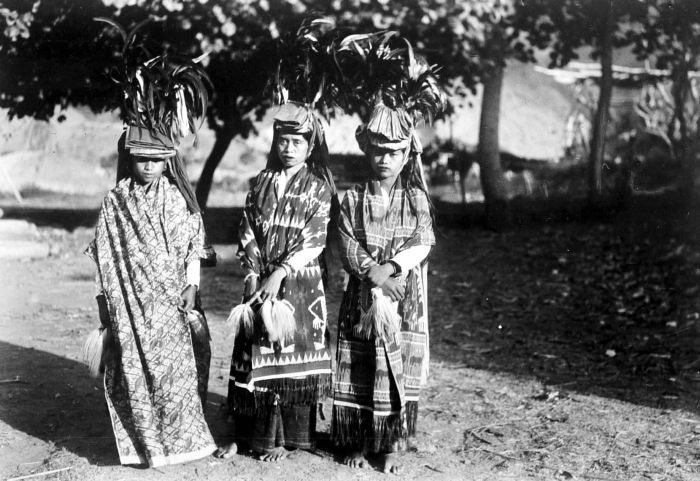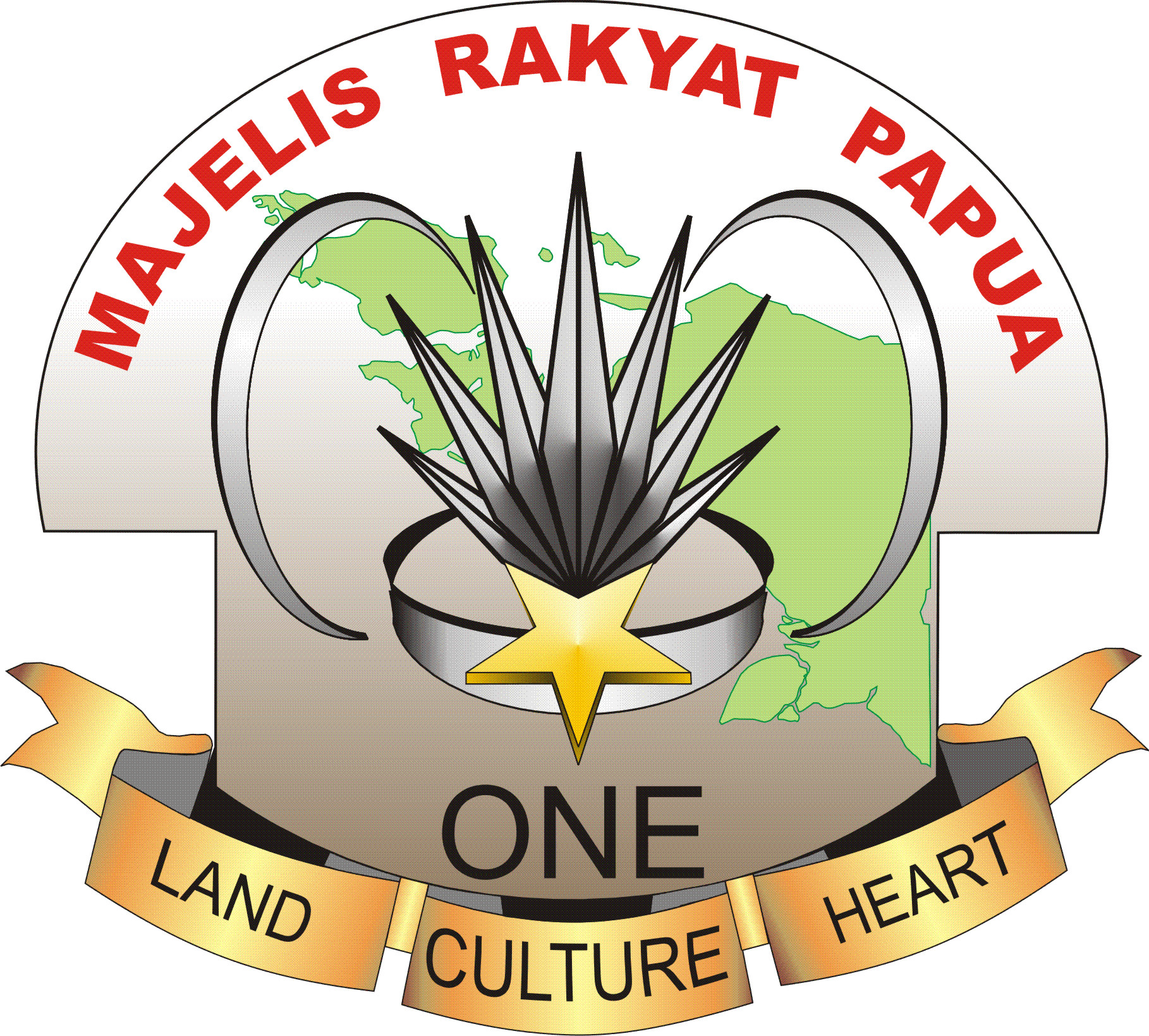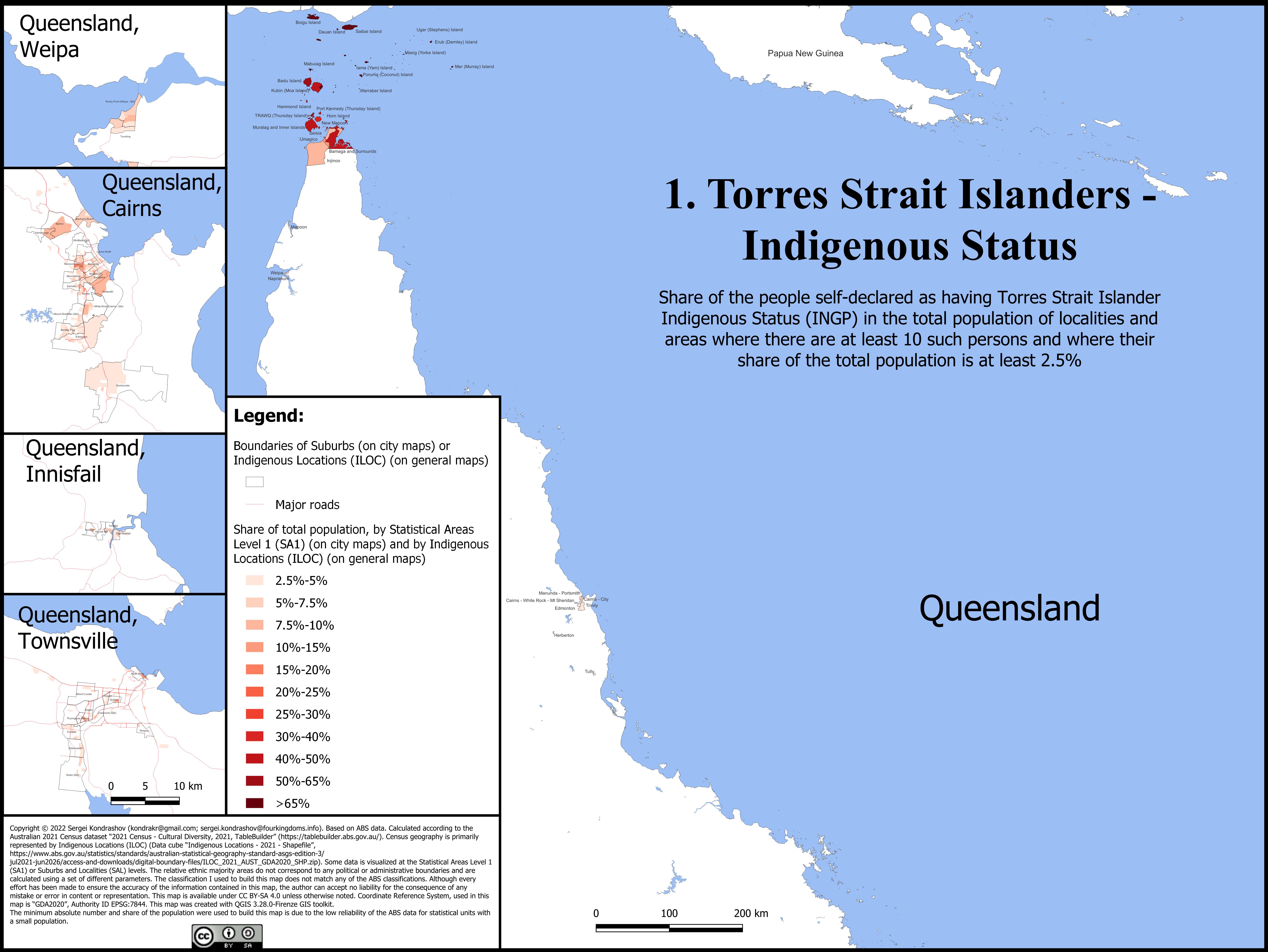|
Haplogroup K2b1 (Y-DNA)
Haplogroup K2b1, known sometimes as haplogroup MS, is a human Y-DNA haplogroup, defined by SNPs P397 and P399. It has a complex, diverse and not-yet fully understood internal structure; its downstream descendants include the major haplogroups Haplogroup M (P256) and Haplogroup S (M230). It is not clear at present whether the basal paragroup K2b1* is carried by any living males. Individuals carrying subclades of K2b1 are found primarily among Papuan peoples, Micronesian peoples, indigenous Australians, and Polynesians. Structure K2b1 is a direct descendant of K2b – known previously as Haplogroup MPS. Its only primary branches are the major haplogroups S (B254), also known as K2b1a (and previously known as Haplogroup S1 or K2b1a4) and M (P256), also known as K2b1b (previously K2b1d). Distribution K2b1 is strongly associated with the indigenous peoples of Melanesia (especially the island of New Guinea) and Micronesia, and to a lesser extent Polynesia, where it is gen ... [...More Info...] [...Related Items...] OR: [Wikipedia] [Google] [Baidu] |
Haplogroup K2b-P331
Haplogroup K2b (P331), also known as MPS is a human y-chromosome haplogroup that is thought to be less than 3,000 years younger than K, and less than 10,000 years younger than F, meaning it probably is around 50,000 years old, according to the age estimates of Tatiana Karafet et al. 2014. Basal paragroup K2b* has not been identified among living males but was found in Upper Paleolithic Tianyuan man from China. K2b1 (P397/P399) known previously as Haplogroup MS, and Haplogroup P (P-P295), also known as K2b2 are the only primary clades of K2b. The population geneticist Tatiana Karafet and other researchers (2014) point out that K2b1, its subclades and P* are virtually restricted geographically to South East Asia and Oceania. Whereas, in a striking contrast, P1 (P-M45) and its primary subclades Q and R now make up "the most frequent haplogroup in Europe, the Americas, and Central Asia and South Asia". According to Karafet et al., the estimated dates for the branching of K, K2, ... [...More Info...] [...Related Items...] OR: [Wikipedia] [Google] [Baidu] |
New Guinea
New Guinea (; Hiri Motu: ''Niu Gini''; , fossilized , also known as Papua or historically ) is the List of islands by area, world's second-largest island, with an area of . Located in Melanesia in the southwestern Pacific Ocean, the island is separated from Mainland Australia, Australia by the wide Torres Strait, though both landmasses lie on the same continental shelf, and were united during episodes of low sea level in the Pleistocene glaciations as the combined landmass of Sahul. Numerous smaller islands are located to the west and east. The island's name was given by Spanish explorer Yñigo Ortiz de Retez during his maritime expedition of 1545 due to the perceived resemblance of the indigenous peoples of the island to those in the Guinea (region), African region of Guinea. The eastern half of the island is the major land mass of the nation of Papua New Guinea. The western half, known as Western New Guinea, forms a part of Indonesia and is organized as the provinces of Pap ... [...More Info...] [...Related Items...] OR: [Wikipedia] [Google] [Baidu] |
Chuukkese People
The Chuukese, previously spelled Trukese, are a Micronesian-speaking ethnic group indigenous to the island of Chuuk and its surrounding islands and atolls. They constitute almost 49% of the population of the Federated States of Micronesia, making them by far the largest ethnic group in the country. Language Their language is Chuukese, which belongs to the Chuukic branch of Micronesian languages, which is in turn part of the Malayo-Polynesian language family. The Malayo-Polynesian language family is a subdivision of a wider Austronesian language family, one of the world's primary language families. The language is written in a modified Latin alphabet. Population A 2010 census showed that the Chuukese people were the fastest growing group of Pacific Islanders during the 2000s decade in the United States, increasing from a population of about 700 in the year 2000 to more than 4,000 in time for the 2010 census. Culture Religion Although the Chuukese are overwhelmingly Chris ... [...More Info...] [...Related Items...] OR: [Wikipedia] [Google] [Baidu] |
Sumba
Sumba (; ), natively also spelt as Humba, Hubba, Suba, or Zuba (in Sumba languages) is an Indonesian island (part of the Lesser Sunda Archipelago group) located in the Eastern Indonesia and administratively part of the East Nusa Tenggara provincial territory. Sumba has an area of , about the same size as Jamaica or Hawaii (Island). The population was 686,113 at the 2010 CensusBiro Pusat Statistik, Jakarta, 2011. and 779,049 at the 2020 Census;Badan Pusat Statistik, Jakarta, 2021. the official estimate as of mid-2024 was 853,428 (comprising 436,845 males and 416,583 females).Badan Pusat Statistik, Jakarta, 28 February 2025, ''Provinsi Nusa Tenggara Timur Dalam Angka 2025'' (Katalog-BPS 1102001.53) To the northwest of Sumba is Sumbawa, to the northeast, across the Sumba Strait (Selat Sumba), is Flores, to the east, across the Savu Sea (including Savu Island), is Timor, and to the south, across part of the Indian Ocean, is Australia. Nomenclature The name "Sumba" is der ... [...More Info...] [...Related Items...] OR: [Wikipedia] [Google] [Baidu] |
Papua (province)
Papua is a provinces of Indonesia, province of Indonesia, comprising the northern coast of Western New Guinea together with island groups in Cenderawasih Bay to the west. It roughly follows the borders of the Papuan customary region of Tabi Saireri, and is divided into eight regency (Indonesia), regencies () and one city (''kota''), the latter being the provincial capital of Jayapura. It is bordered by the nation of Papua New Guinea to the east, the Pacific Ocean to the north, Cenderawasih Bay to the west, and the provinces of Central Papua and Highland Papua to the south. The province also shares Maritime boundary, maritime boundaries with Palau in the Pacific. Papua, along with the five other Western New Guinea#Administration, Papuan provinces, has a higher degree of autonomy level compared to other Provinces of Indonesia, Indonesian provinces. Before 2003, the province (known as Irian Barat from 1962 to 1973 and Irian Jaya from 1973 to 2002) covered the entirety of Western N ... [...More Info...] [...Related Items...] OR: [Wikipedia] [Google] [Baidu] |
Flores
Flores is one of the Lesser Sunda Islands, a group of islands in the eastern half of Indonesia. Administratively, it forms the largest island in the East Nusa Tenggara Province. The area is 14,250 km2. Including Komodo and Rinca islands off its west coast (but excluding the Solor Archipelago to the east of Flores), the population was 1,878,875 in the 2020 Census (including various offshore islands); the official estimate as of mid-2024 was 2,014,110.Badan Pusat Statistik, Jakarta, 28 February 2025, ''Provinsi Nusa Tenggara Timur Dalam Angka 2025'' (Katalog-BPS 1102001.53) The largest towns are Ende and Maumere. The name ''Flores'' is of Portuguese origin, meaning "Flowers". Flores is located east of Sumbawa and the Komodo Islands, and west of the Solor Islands and the Alor Archipelago. To the southeast is Timor. To the south, across the Sumba Strait, is Sumba Island, and to the north, beyond the Flores Sea, is Sulawesi. Among all islands containing Indonesia ... [...More Info...] [...Related Items...] OR: [Wikipedia] [Google] [Baidu] |
Vanuatu
Vanuatu ( or ; ), officially the Republic of Vanuatu (; ), is an island country in Melanesia located in the South Pacific Ocean. The archipelago, which is of volcanic origin, is east of northern Australia, northeast of New Caledonia, east of New Guinea, southeast of Solomon Islands, and west of Fiji. Vanuatu was first inhabited by Melanesians, Melanesian people. The first Europeans to visit the islands were a Spanish expedition led by Portuguese navigator Pedro Fernandes de Queirós, Fernandes de Queirós, who arrived on the largest island, Espíritu Santo, in 1606. Queirós claimed the archipelago for Spain, as part of the colonial Spanish East Indies and named it . In the 1880s, France and the United Kingdom of Great Britain and Ireland, United Kingdom claimed parts of the archipelago, and in 1906, they agreed on a framework for jointly managing the archipelago as the New Hebrides through an Anglo-French condominium (international law), condominium. An independence movem ... [...More Info...] [...Related Items...] OR: [Wikipedia] [Google] [Baidu] |
Torres Strait Islanders
Torres Strait Islanders ( ) are the Indigenous Melanesians, Melanesian people of the Torres Strait Islands, which are part of the state of Queensland, Australia. Ethnically distinct from the Aboriginal Australians, Aboriginal peoples of the rest of Australia, they are often grouped with them as Indigenous Australians. Today, many more Torres Strait Islander people live in mainland Australia than on the Islands. Five distinct peoples exist within the broader designation of Torres Strait Islander people, based partly on geographical and cultural divisions. Kalaw Lagaw Ya and Meriam Mir comprise the two main Indigenous language groups; Torres Strait Creole is also widely spoken as a language of trade and commerce. The core of Island culture is Indigenous people of New Guinea, Papuan, and the people are traditionally a seafaring nation. The Torres Islanders exhibit a strong artistic culture, particularly in sculpture, printmaking, and mask-making. Demographics Of the 133 islands ... [...More Info...] [...Related Items...] OR: [Wikipedia] [Google] [Baidu] |
Papua New Guinea
Papua New Guinea, officially the Independent State of Papua New Guinea, is an island country in Oceania that comprises the eastern half of the island of New Guinea and offshore islands in Melanesia, a region of the southwestern Pacific Ocean north of Australia. It has Indonesia–Papua New Guinea border, a land border with Indonesia to the west and neighbours Australia to the south and the Solomon Islands to the east. Its capital, on its southern coast, is Port Moresby. The country is the world's third largest list of island countries, island country, with an area of . The nation was split in the 1880s between German New Guinea in the North and the Territory of Papua, British Territory of Papua in the South, the latter of which was ceded to Australia in 1902. All of present-day Papua New Guinea came under Australian control following World War I, with the legally distinct Territory of New Guinea being established out of the former German colony as a League of Nations mandate. T ... [...More Info...] [...Related Items...] OR: [Wikipedia] [Google] [Baidu] |
Polynesia
Polynesia ( , ) is a subregion of Oceania, made up of more than 1,000 islands scattered over the central and southern Pacific Ocean. The indigenous people who inhabit the islands of Polynesia are called Polynesians. They have many things in common, including Polynesian languages, linguistic relations, Polynesian culture, cultural practices, and Tradition, traditional beliefs. In centuries past, they had a strong shared tradition of sailing and Polynesian navigation, using stars to navigate at night. The term was first used in 1756 by the French writer Charles de Brosses, who originally applied it to all the list of islands in the Pacific Ocean, islands of the Pacific. In 1831, Jules Dumont d'Urville proposed a narrower definition during a lecture at the Société de Géographie of Paris. By tradition, the islands located in the South Seas, southern Pacific have also often been called the South Sea Islands, and their inhabitants have been called South Sea Islanders. The Hawai ... [...More Info...] [...Related Items...] OR: [Wikipedia] [Google] [Baidu] |
Micronesia
Micronesia (, ) is a subregion of Oceania, consisting of approximately 2,000 small islands in the Northwestern Pacific Ocean. It has a close shared cultural history with three other island regions: Maritime Southeast Asia to the west, Polynesia to the east, and Melanesia to the south—as well as with the wider community of Austronesian peoples. The region has a tropical marine climate and is part of the Oceanian realm. It includes four main archipelagos—the Caroline Islands, the Gilbert Islands, the Mariana Islands, and the Marshall Islands — as well as numerous islands that are not part of any archipelago. Political control of areas within Micronesia varies depending on the island, and is distributed among six sovereign nations. Some of the Caroline Islands are part of the Republic of Palau and some are part of the Federated States of Micronesia (often shortened to "FSM" or "Micronesia"—not to be confused with the identical name for the overall region). The Gi ... [...More Info...] [...Related Items...] OR: [Wikipedia] [Google] [Baidu] |





